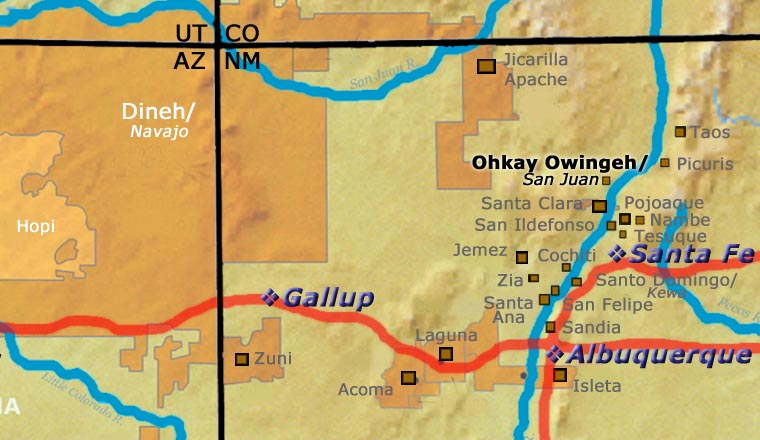Ohkay Owingeh Pottery
Like most of New Mexico’s pueblos, the quality and amount of pottery made at Ohkay Owingeh fell off sharply after the Spanish arrived. The making of pottery sputtered along until it virtually disappeared in the late 1800s. Then a group of women came together in the 1930s and decided to restart their artistic traditions. An excavation on the west side of the Rio Grande had turned up the ruins of an ancestral Tewa pueblo from the late 1400s-early 1500s (pre-Spanish occupation: the most important criterion). Among those ruins they found what they call Potsuwi’i incised pottery sherds. Those sherds were used to define a new Ohkay Owingeh pottery style: decorative zones of tan with geometric fine lines and selected areas of polished red slip were the final result of that decision.
That decision was made in the 1930s. That first revival lasted into the 1960s, as the original potters aged and died. A few of their children carried on and there was a second revival from the 1980s up into the 2000s. But then those potters aged and began to die. And then there weren’t so many children interested in carrying on.
